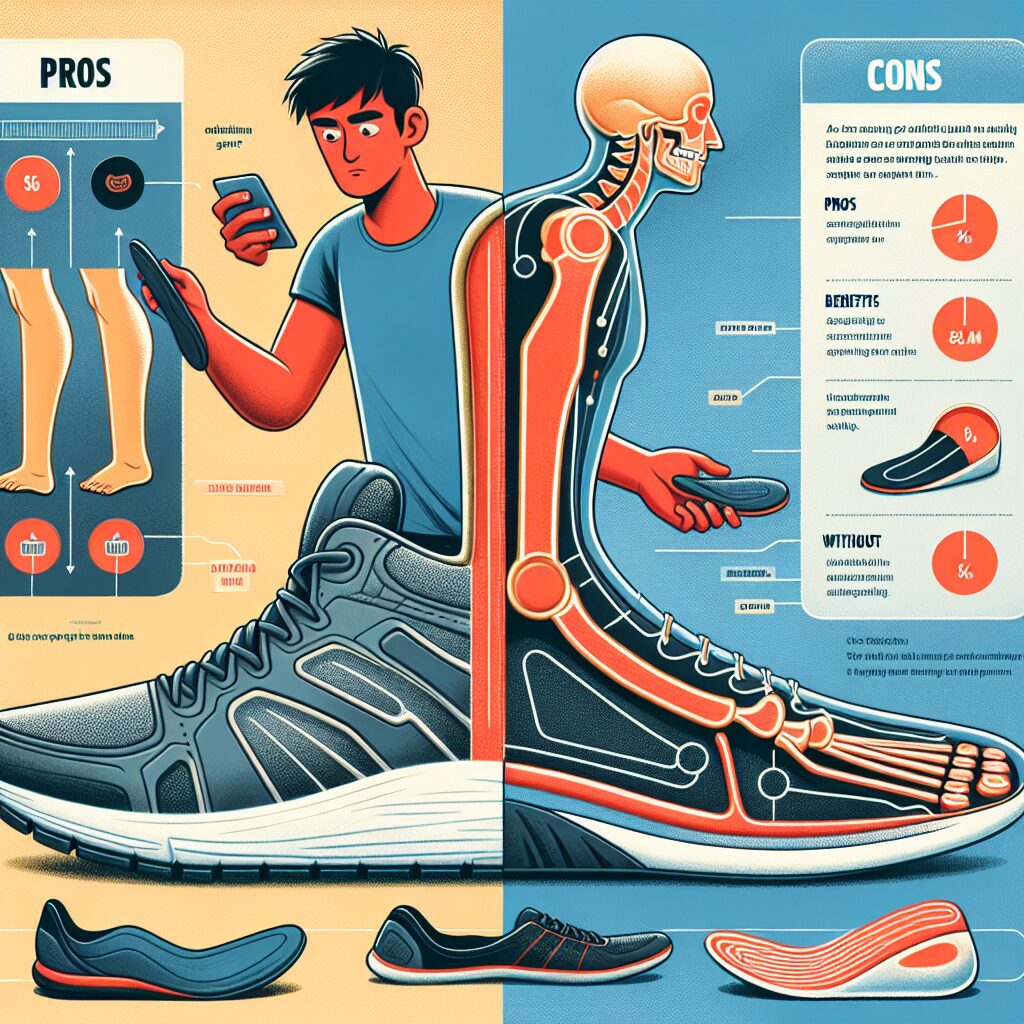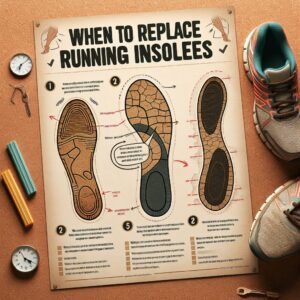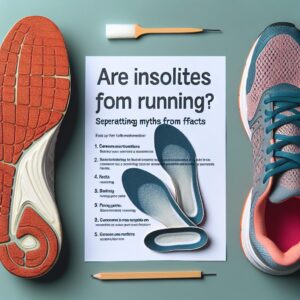
To Insole or Not to Insole: Do You Need Extra Support for Running Shoes
-
Table of Contents
Whether you need extra support in your running shoes largely depends on your individual foot structure, gait, and any specific conditions or issues you may have. Neutral running shoes do not contain a built-in support system and are usually lighter, offering focused cushioning in the heel area. On the other hand, stability running shoes feature a built-in support system, a thicker midsole foam, and are generally heavier. Wearing the shoe that provides the correct support for your feet is crucial for both comfort and injury prevention.
Additionally, even runners with neutral arches can benefit from wearing arch support running shoes, as they may notice improved shock absorption and balance during their runs. It’s clear that the need for extra support is individual and should be determined based on personal comfort, running mechanics, and any recommendations from foot and ankle specialists.
Exploring the Debate: The Necessity of Insoles in Running Shoes

The debate surrounding the necessity of insoles in running shoes is one that has been ongoing for quite some time. Some runners swear by the additional support that insoles provide, while others argue that they are unnecessary and can even be detrimental to performance. This article aims to explore both sides of the argument, providing a balanced view on the topic.
Insoles, also known as orthotics, are inserts that are placed inside shoes to provide additional support and cushioning. They are often recommended for individuals who have specific foot conditions, such as flat feet or high arches, as they can help to correct imbalances and alleviate discomfort. For runners, insoles can potentially offer a range of benefits. They can help to distribute pressure more evenly across the foot, reducing the risk of injuries such as stress fractures. They can also provide additional shock absorption, which can be particularly beneficial for those who run on hard surfaces.
However, it’s important to note that not all runners will benefit from insoles. Some studies suggest that insoles can alter the natural biomechanics of the foot, potentially leading to other issues. For example, if an insole provides too much arch support, it could cause the foot to become overly reliant on the insert, weakening the muscles in the foot over time. This could potentially increase the risk of injuries in the long term.
Furthermore, the effectiveness of insoles can vary greatly depending on the individual. Factors such as foot shape, running style, and personal comfort preferences can all influence how beneficial insoles are. For some runners, insoles can make a significant difference in comfort and performance. For others, they may not notice any difference at all, or may even find that insoles make their shoes less comfortable.
Given these varying perspectives, it’s clear that the decision to use insoles in running shoes is a highly personal one. If you’re considering using insoles, it’s recommended to seek professional advice. A podiatrist or physiotherapist can assess your foot structure and running style, and provide personalized advice on whether insoles could be beneficial for you. They can also help to ensure that any insoles you use are correctly fitted, as poorly fitted insoles can cause more harm than good.
In conclusion, while insoles can provide additional support and cushioning for runners, they are not necessarily beneficial for everyone. The decision to use insoles should be based on individual needs and circumstances, and should ideally be made in consultation with a healthcare professional. Whether you choose to insole or not to insole, the most important thing is to listen to your body and do what feels right for you. After all, running should be an enjoyable activity, and the right footwear can play a crucial role in ensuring that it remains so.
To Insole or Not to Insole: Evaluating the Need for Extra Support in Running Shoes
The question of whether to use additional insoles in running shoes is one that has been debated among athletes and fitness enthusiasts for years. The answer, however, is not as straightforward as one might think. It largely depends on individual needs, the type of running shoes, and the nature of the physical activity. This article aims to provide a comprehensive evaluation of the need for extra support in running shoes.
Running shoes are designed with built-in support to cushion the foot, absorb shock, and provide stability. They are engineered to accommodate the natural movement of the foot while running, and to protect against common running injuries. However, not all running shoes are created equal. The level of support varies significantly from one brand to another, and even among different models within the same brand. Therefore, the first step in determining whether you need additional insoles is to assess the built-in support of your running shoes.
Insoles, also known as footbeds or inner soles, are removable layers inside the shoes that provide extra cushioning and support. They can be made of various materials, including foam, gel, and plastic. Insoles can be particularly beneficial for runners with specific foot conditions, such as flat feet or high arches, which may require more support than what is provided by standard running shoes. They can also help alleviate foot pain and discomfort caused by long-distance running or intensive training.
However, it’s important to note that insoles are not a one-size-fits-all solution. They come in different shapes and sizes, and their effectiveness largely depends on how well they fit your feet and shoes. Therefore, if you decide to use insoles, it’s crucial to choose the right ones. It’s recommended to seek professional advice from a podiatrist or a trained shoe fitter to ensure the insoles are suitable for your feet and running shoes.
Moreover, while insoles can provide additional support, they are not a substitute for good-quality running shoes. If your running shoes are worn out or don’t provide adequate support, it’s better to invest in a new pair rather than relying on insoles. Wearing unsuitable running shoes, even with insoles, can lead to foot injuries and hinder your performance.
In conclusion, the decision to use insoles in running shoes should be based on individual needs and circumstances. If your running shoes provide sufficient support and you don’t have any foot conditions that require extra cushioning, you may not need insoles. However, if you experience foot pain or discomfort while running, or if you have a specific foot condition, insoles can be a valuable addition to your running gear. Regardless of whether you choose to use insoles or not, it’s essential to wear good-quality running shoes that fit well and provide adequate support. Remember, the key to successful and injury-free running lies in the right combination of footwear, training, and personal care.
Unraveling the Truth: Do Running Shoes Require Additional Insole Support?
Running shoes are a critical component of any runner’s gear, designed to provide comfort, support, and protection to the feet during the strenuous activity. However, a question that often arises among runners, both novice and seasoned, is whether additional insole support is necessary for running shoes. This article aims to unravel the truth about this matter, providing insights based on scientific research and expert opinions.
Insoles, also known as footbeds or inner soles, are removable layers inside the shoes that provide extra cushioning and support. They are often used to enhance comfort, alleviate foot pain, and prevent injuries. However, the necessity of additional insole support in running shoes is a topic of ongoing debate among experts.
On one hand, some experts argue that high-quality running shoes are already engineered with adequate support and cushioning. They are designed to absorb shock, provide stability, and promote proper foot alignment, reducing the risk of running-related injuries. Therefore, these experts suggest that additional insoles may not be necessary unless a runner has specific foot conditions or needs.
On the other hand, some experts believe that additional insoles can enhance the performance and comfort of running shoes. They argue that insoles can provide extra cushioning, reduce pressure on the feet, and improve the fit of the shoes. This can be particularly beneficial for runners who have high arches, flat feet, or other foot conditions. Moreover, insoles can also help to extend the lifespan of running shoes, as they can be replaced when worn out, keeping the shoes comfortable and supportive.
Scientific research on this topic has yielded mixed results. Some studies have found that additional insole support can reduce foot and leg fatigue, improve running efficiency, and prevent injuries. However, other studies have found no significant benefits of insoles in reducing injury rates or improving performance. Therefore, the effectiveness of insoles may vary depending on individual factors such as foot shape, running style, and personal preference.
In conclusion, whether or not you need extra insole support for your running shoes depends largely on your individual needs and circumstances. If you have specific foot conditions, experience discomfort or pain when running, or simply prefer the feel of running with insoles, then additional insole support may be beneficial for you. However, if your running shoes are comfortable and supportive without insoles, and you do not have any foot problems, then additional insoles may not be necessary.
It is recommended to consult with a podiatrist or a running shoe specialist to determine the best solution for your needs. They can assess your foot shape, gait, and running style, and recommend whether additional insole support would be beneficial for you. Remember, the ultimate goal is to ensure that your running shoes provide the comfort, support, and protection that your feet need for a safe and enjoyable running experience.In conclusion, the need for extra support in running shoes through insoles largely depends on individual factors such as foot shape, running style, and any existing foot conditions. While some runners may benefit from the additional support and cushioning, others may find it unnecessary. Therefore, it’s crucial to understand your specific needs and consult with a podiatrist or a footwear expert before deciding to use insoles in your running shoes.





